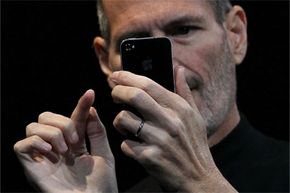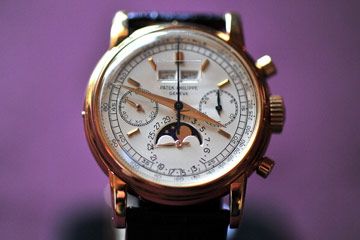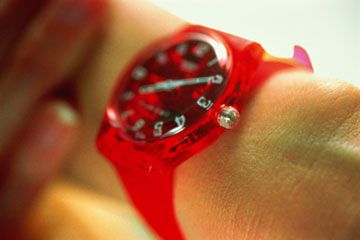In an age when 91 percent of Americans are joined at the hip to cell phones, in which we can almost read by the glow of the LED clocks adorning our kitchen appliances and family room electronics, strapping a timepiece to your wrist might strike you as redundant [source: Foresman]. It's no surprise, then, that blogs and news outlets have declared the wristwatch deader than disco, Dillinger and the dodo. The truth, however, is a little more complicated.
When total American watch sales dipped 4.9 percent between 2001 and 2005, analysts naturally saw it as a sign that the much-anticipated Rolex Ragnarok had begun. But watch sales, like those of dozens of other luxury and durable goods, are cyclical. Despite the worst economic downturn since the Great Depression, the industry bounced back in 2010 and 2011 [sources: Gonzalez; Agence France-Presse; Shuster].
Advertisement
Does that mean the same number of people still wear watches? Not necessarily. As of July 2012, the kind of high-end timepieces mentioned in rap lyrics and hawked in Financial Times ads far outperformed the $100-or-less offerings. Brands marketed toward young adults have felt the squeeze the most, although $1,000-plus watches continue to show up on the wrists of image-conscious young up-and-comers [sources: FSWI; Agence France-Presse; Shuster].
As any luxury watchmaker will tell you, timepieces are less about time and more about image, fashion and status. Cartier doesn't market time; it brands lifestyle. Consider the ongoing demand for expensive mechanical watches, which are less accurate than quartz timepieces, or the range of watches featuring nonfunctional elements, such as diamonds, moving liquids and so on. Internationally, the economic boom in China -- where watches, especially mechanicals, have long been associated with prosperity – has driven 40-60 percent of the demand for European watches [sources: Gonzalez; Agence France-Presse; Shuster].
Always conscious of the zeitgeist, watchmakers are also churning out "killer app" timepieces packed with functions targeted at specific activities, including climbing, diving, fishing, golfing, motor racing and sailing. They have also adopted an "if you can't beat 'em, join 'em" approach and integrated their watches into our ever-more-wired lifestyle. Today, you can buy watches that alert you when your muted cell phone rings, identify the caller and indicate if he or she left a message. Some watches can play MP3s and videos or pull files from your computer [source: Shuster].
Where will things wind up? Only time will tell. For now at least, it's clear that the wristwatch industry can take a licking and keep on ticking.
Advertisement



